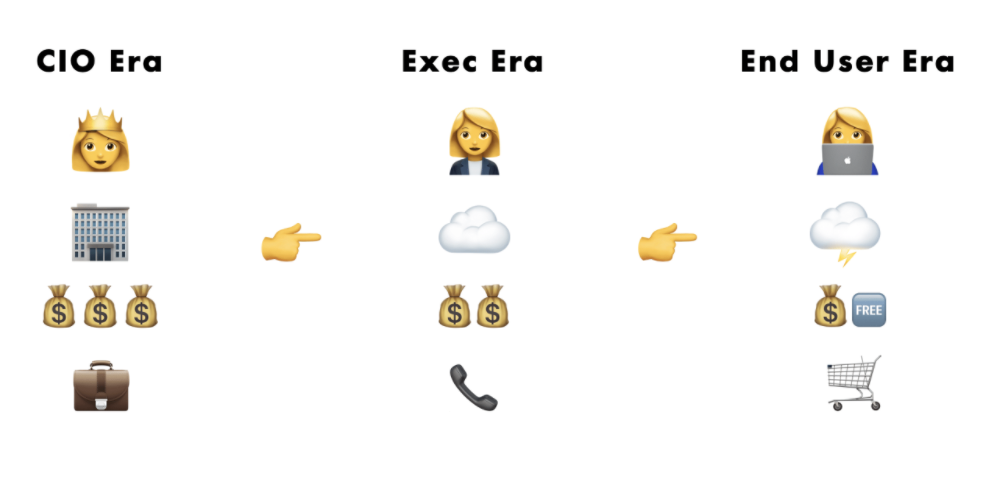Product-Led Growth and Why ITAM Shouldn't Be Afraid of It

You might know what product-led growth (PLG) is without being familiar with the term. First coined in 2016, PLG refers to strategies companies use to rely on the product itself to acquire, activate and retain customers. At the heart of this approach is enabling the prospective user to first experience and use a product prior to purchasing.
A few companies that have recently used this approach successfully include Slack and Calendly. During the pandemic, Slack saw explosive growth and one reason for this was the PLG strategy. If you communicated with your colleagues during remote work or attended a virtual happy hour with your friends, you might have joined a Slack channel, and just like that, you became a Slack user. Then, to take advantage of premium services, you may have become a paying customer.
PLG is the latest example of a 30-year shift from complete command and control by the IT department to cloud-enabled purchasing by business units and now, the ability for individuals to acquire software and influence organizational technology decisions. According to our colleagues at OpenView Venture Partners, that shift looks like this:

One reason PLG is growing like wildfire among software vendors today is the realization of lower cost of customer acquisition and the higher customer satisfaction that becomes possible versus what is typically achieved through more traditional sales-led growth strategies.
Distributed software purchasing models
If you’re like most SAM and ITAM practitioners, you may be thinking, “Well, that’s great for those SaaS vendors, but they’re making my life even harder.” In some ways that can be true, but only if you let it. The cloud-enabled shift in technology purchasing responsibility from IT to business units and even individuals has been a challenge for those who are responsible for managing an organization’s technology. As SAMs and ITAMs, how are we supposed to be fully knowledgeable about all technology in use across the enterprise when we weren’t involved in the acquisition?
When technology is purchased without IT involvement, IT is left holding the bag. IT is still responsible for cost containment, security and governance. There is often a temptation to try to lock down SaaS purchasing and wrest back control.
In reality, that horse has left the barn and there is no sense latching the gate now. You wouldn’t want to, even if you could. With self-purchase, end users are signaling what they need to succeed in their jobs. They are procuring the tools they need to grow the business.
Create guardrails, not gates
So, what can IT do? Embrace it. The sooner we accept that technology procurement by business units and individuals isn’t going away, the sooner we can instead focus on putting governance in place that effectively accounts for software cost, security and compliance concerns.
The idea is to create guardrails, not gates, delivering the technology users need while maintaining IT’s core responsibilities of optimization and security. To implement such governance, you first need holistic visibility, regardless of who procured the technology. With visibility, IT leaders and teams are well-positioned to pursue their goals of optimizing costs, reducing risk and establishing governance models while supporting the overall growth strategies of the organization. The best IT leaders know the core mission of IT is to serve the business.
If holistic visibility of technology usage is a prerequisite to safely embracing business unit-led IT (boosted by PLG strategies that target them), then how will you gain this visibility? A manual process strategy may get you part of the way to your goal, but it’s a lot of heavy lifting and it isn’t scalable. There are just too many applications, too many technologies and too many users to be able to find them all. This is where a SAM/ITAM solution can help.
Asset management products can automate the collection of usage information across on-prem, datacenter, SaaS and cloud. They provide detailed insight into what is being used and who is using it. With this information, IT can establish the guardrails that meet user needs and keep the organization efficient and safe.